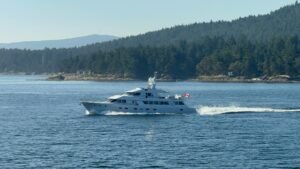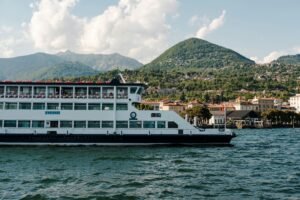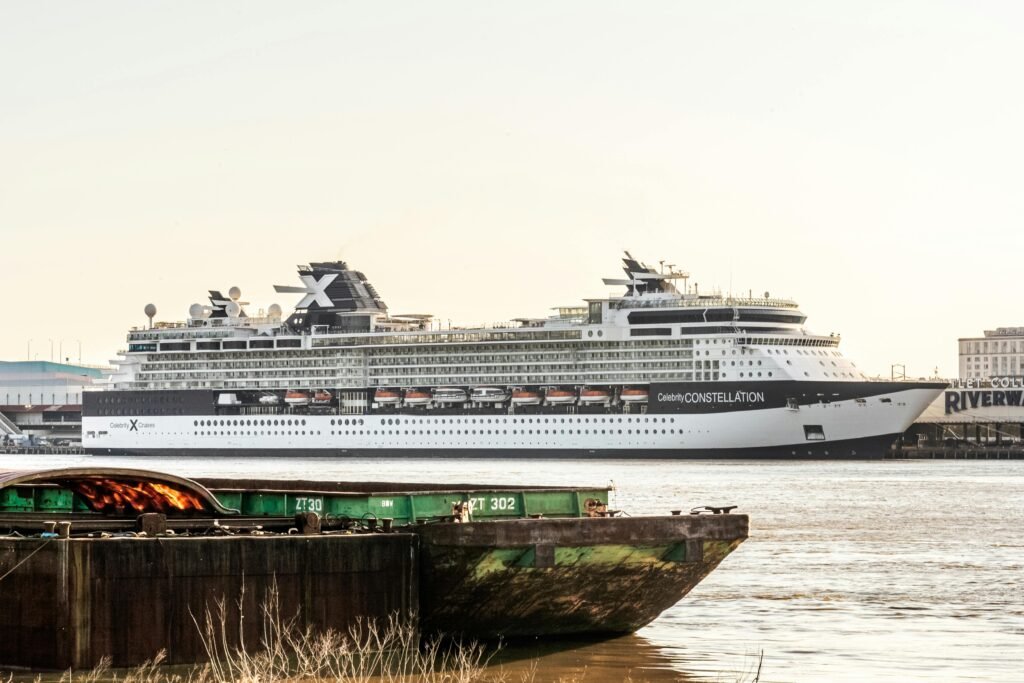The Cruise Ship Fantome Mystery
The story of the Fantome is one of the foremost frequenting stories in cutting edge oceanic history. This amazing dispatch and its last voyage amid Typhoon Mitch in 1998 still raise questions nowadays. The destiny of the Fantome remains an unsolved secret, capturing the creative ability of seafarers, students of history, and travelers in both the Joined together States and the United Kingdom. To get it the complete scope of the puzzle, it is vital to investigate the ship’s history, the occasions that driven to its final travel, and the bequest it cleared out behind.
Origins of the Fantome
The Fantome was initially built in 1927 by an Italian shipyard. Its development was portion of a unused time of traveler ships that mixed extravagance with execution. Outlined to carry travelers in fashion, it rapidly created a notoriety for style. All through its early decades, the dispatch changed proprietorship a few times, counting a period beneath the British Service of War Transport amid World War II. This included to its as of now captivating foundation.
After the war, the Fantome entered private hands once more and was inevitably obtained by Windjammer Unshod Travels. This company got to be known for advertising courageous cruising encounters that offered to travelers looking for something diverse from conventional voyage ships. Beneath Windjammer, the Fantome carried visitors around the Caribbean, giving them with a one of a kind mix of history and extravagance. By the late twentieth century, the Fantome had gotten to be one of the foremost famous vessels within the Windjammer armada.
Windjammer Barefoot Cruises and the Fantome
Windjammer Unshod Travels catered to those who needed an elective to expansive, commercial journey lines. Rather than gigantic drifting cities, Windjammer worked littler cruising ships with hint settings. The Fantome was one of its crown gems, advertising a unmistakable involvement that mixed unwinding, camaraderie, and the sentiment of the ocean.
Travelers on board the Fantome frequently portrayed the voyages as both laid-back and courageous. The dispatch may carry around one hundred visitors, making it distant littler than the mega-ships of nowadays. Visitors delighted in suppers on deck, music-filled nighttimes, and island-hopping agendas. For numerous, cruising on the Fantome was the extreme dream excursion.
By the late 1990s, Windjammer had built a solid notoriety among UK and US travelers who needed to investigate the Caribbean in a more individual way. This set the arrange for what would gotten to be the ship’s final and most awful voyage.
Hurricane Mitch: A Deadly Storm
In October 1998, Tropical storm Mitch shaped within the Caribbean. It rapidly developed into one of the foremost effective and dangerous storms of the twentieth century. With supported winds coming to 180 miles per hour, it crushed Central America and cleared out thousands dead. Mitch was unusual, moving ways in ways that caught numerous vessels off watch.
The Fantome was cruising within the locale when Mitch started to debilitate. The transport had as of late withdrawn from Honduras with plans to proceed its normal Caribbean agenda. Be that as it may, as the storm escalates, Captain Guyan Walk arranged to ensure his travelers and team. Choices had to be made rapidly, and each choice carried gigantic dangers.
The Captain’s Decision
Captain Walk, confronted with the developing threat, chosen to empty the travelers at the island of Roatán. This choice likely spared handfuls of lives, as the storm was as well unsafe for non-crew individuals to confront. With as it were the team remaining, the Fantome endeavored to elude the hurricane’s way.
The arrange was to cruise east toward Belize and after that south, trusting to maintain a strategic distance from the most exceedingly bad of the storm. But Mitch’s whimsical developments made route nearly inconceivable. The tropical storm moved course different times, cutting off conceivable elude courses. In spite of each exertion, the Fantome found itself trapped by one of the foremost rough storms ever recorded within the locale.

The Last Contact
On October 27, 1998, the Fantome sent out its last communications. The captain detailed overwhelming oceans, gale-force winds, and compounding conditions. The final known position of the vessel was off the coast of Honduras, close the island of Guanaja. After that, hush taken after.
No trouble flag was ever gotten. No survivors were ever found. The ocean gulped the Fantome and all thirty-one crew individuals on board. The transport had vanished, clearing out behind one of the foremost persevering sea puzzles of cutting edge times.
Search and Aftermath
Taking after the vanishing, the Joined together States Coast Watch and other organizations propelled an broad look. Airplane and ships scoured the Caribbean waters, trusting to discover flotsam and jetsam, rafts, or survivors. Over the taking after days, little pieces of destruction washed shorewards, counting life pontoons and individual things. These affirmed that the Fantome had been misplaced, but no bodies were ever recouped.
The catastrophe cleared out families crushed. Team individuals came from different countries, and the misfortune influenced communities over the globe. For Windjammer Unshod Travels, the calamity checked the darkest minute in its history. The company proceeded to work for a long time a short time later, but the misfortune of the Fantome cast a long shadow over its operations.
Why the Fantome Remains a Mystery
Not at all like numerous wrecks, the Fantome’s wreck has never been found. The Caribbean may be a endless and troublesome place to look, with profound waters and solid streams. Without precise data around where the dispatch sank, finding the wreck has demonstrated incomprehensible. This need of physical prove has fueled theory and kept the story lively.
A few speculations recommend that the transport may lie in very deep water, past the reach of most recovery endeavors. Others accept the wreck might be covered up by moving sands or coral close the coast. Since no one knows the precise circumstances of the sinking, the riddle remains unsolved.
Legacy of the Fantome
The misfortune of the Fantome is recollected not as it were as a sea catastrophe but too as a story of bravery. Captain Walk and his group made courageous endeavors to spare their travelers and after that to battle for survival themselves. Their mettle is regularly honored in accounts of the fiasco.
For journey devotees within the US and UK, the Fantome got to be more than fair a transport. It got to be a image of both the sentiment and the threat of the ocean. Indeed nowadays, when present day voyage liners are prepared with progressed climate following and security frameworks, the story of the Fantome reminds us of nature’s control and capriciousness.
Lessons from the Disaster
The Fantome’s destiny highlighted the challenges of dealing with effective storms within the Caribbean. It raised vital questions approximately chance administration, traveler security, and storm estimating. Since 1998, journey lines have moved forward climate checking, departure methods, and communication frameworks to dodge comparable tragedies.
The story moreover underscored the significance of definitive administration. By emptying travelers some time recently the storm struck, Captain Walk guaranteed that no visitors misplaced their lives. This act of obligation remains one of the foremost regarded viewpoints of the catastrophe.
Why the Story Still Fascinates
The puzzle of the Fantome perseveres since it combines experience, valor, and unanswered questions. For travelers, it speaks to the appeal of the ocean, where magnificence and threat coexist. For history specialists, it offers a case consider in maritime risk and decision-making. And for families of the team, it could be a profoundly individual update of lives misplaced as well before long.
In both the UK and the US, intrigued in wrecks and oceanic secrets is solid. The Fantome’s story proceeds to seem in documentaries, books, and online gatherings. It serves as a advanced legend, reminding us that indeed in an age of progressed innovation, the sea can still claim ships without taking off a follow.
The Fantome in Popular Culture
Over the a long time, the Fantome has showed up in tv specials, articles, and sea dialogs. Journalists frequently compare it to other celebrated wrecks, such as the Andrea Doria or the Edmund Fitzgerald. However not at all like those wrecks, which were eventually located and considered, the Fantome remains covered up. This nonappearance of closure makes its story indeed more compelling.
For journey enthusiasts within the Joined together Kingdom, where oceanic history is portion of the national legacy, the Fantome stands nearby amazing stories of misplaced ships. Within the Joined together States, it resounds with a interest for both the sentiment of cruising and the threats of nature. This cross-cultural intrigued makes a difference keep the secret lively.

Could the Wreck Ever Be Found?
Progresses in innovation, counting deep-sea submersibles and sonar mapping, have raised trusts that the wreck of the Fantome might one day be found. Sea investigation has as of now revealed other long-lost ships, a few thought to be gone until the end of time. In any case, the costs and challenges of looking within the Caribbean stay tall.
In the event that the wreck is ever found, it may reply waiting questions approximately how the dispatch went down. It may too bring closure to the families of the group. Until at that point, the Fantome remains one of the ocean’s most persevering privileged insights.
Reflection on the Human Side
Past the puzzle and hypothesis, the Fantome catastrophe is eventually approximately individuals. Thirty-one team individuals misplaced their lives, and families never saw them once more. For these families, the story isn’t fair a sea legend but a individual pain.
Recalling the Fantome implies honoring these lives. Their bravery, benefit, and give up shape the center of the story. Without their endeavors, the disaster might have been distant more awful. This human measurement guarantees that the Fantome is recollected not as it were as a dispatch but as a story of versatility and boldness.
Frequently Asked Questions
What was the Fantome cruise ship?
The Fantome was a 1927-built traveler transport that got to be portion of the Windjammer Unshod Travels armada. It offered sailing encounters within the Caribbean and was known for its charm and bold fashion.
What happened to the Fantome?
In October 1998, the Fantome experienced Typhoon Mitch within the Caribbean. After clearing travelers, the transport endeavored to elude the storm but was misplaced with all thirty-one team individuals.
Where did the Fantome sink?
The ship’s last known area was close Guanaja, Honduras, but its correct sinking location remains obscure. No wreck has ever been found.
Why is the Fantome still a mystery?
Since the wreck has never been found and no survivors were recuperated, the correct points of interest of how the Fantome sank stay vague. This has fueled progressing hypothesis and interest.
Could the wreck ever be discovered?
With propels in deep-sea innovation, it is conceivable that the Fantome’s wreck may one day be found. Be that as it may, the Caribbean’s conditions make such a look very difficult.
Final Thoughts
The Fantome’s story could be a effective update of both the magnificence and the peril of the sea. Its vanishing amid Typhoon Mitch remains one of the greatest oceanic puzzles of cutting edge times. For travelers within the UK and US, the legend of the Fantome blends history, catastrophe, and bravery in a way that proceeds to reverberate.
Whether the wreck is ever found or not, the Fantome will continuously be recalled. It speaks to the strength of those who cruised her, the capriciousness of nature, and the persevering control of sea stories to charm the human creative energy.




